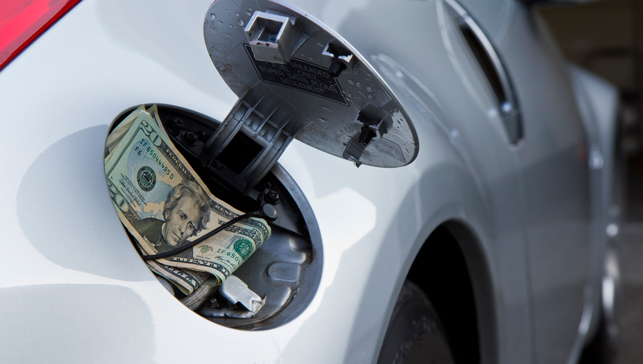With Congress on Wednesday giving final approval to President Biden’s $1.9 trillion stimulus plan, who is the biggest winner from Washington’s biggest ever spending spree? State and local governments in California.
In music to Gov. Gavin Newsom’s ears, a virtual Brink’s truck is about deliver a mountain of cash from Congress to California, to the tune of $42.6 billion according to the National Conference of State Legislatures. State government will reportedly get $26.1 billion in aid, while local governments will get about $16 billion.
In prior blogs, I’ve written about Newsom having pushed Speaker Pelosi’s bill to give state and local governments a $1 trillion bailout since she first proposed it in the early days of the Covid-19 pandemic.
Despite the fact that California is experiencing a roughly $15.5 billion budget surplus this year – and likely more given that tax revenue is outpacing projections – Newsom will get to channel his inner-Oprah handing out budget cash.
Republicans in Congress characterized the state and local aid as a bailout for poorly-managed, liberal-run cities running high deficits. Reactions from mayors across California show that the GOP criticisms may be well founded.
Los Angeles Mayor Eric Garcetti said he was “ecstatic” about the City of Angels standing to receive about $1.35 billion – part of which will be used to “pay off key debts” according to the Los Angeles Times. Sacramento Mayor Darrell Steinberg says “we will put this money back to work” of the estimated $121 million the city stands to receive.
The San Francisco Chronicle reported that the Biden bailout “will erase the majority of San Francisco’s projected $650 million budget deficit over the next two years.”
House Republican Leader Kevin McCarthy noted in a speech Wednesday on the House floor that the bill will spending only “9 percent on the virus, but San Francisco – the home to our speaker – gets to wipe out 92 percent of their budget deficit,” while also charging that every American will have to pay $5,000 to fund the San Francisco bailout and the bill’s other giveaways.
Now as they say on late night informercials, “But wait, there’s more!” According to a fact sheet from Sen. Alex Padilla’s office, California will get billions more in addition to the state and local bailout, including:
- $15 billion “to help California’s K-12 schools reopen safely” and $5 billion to California higher education, “half of which must go to emergency financial aid to students” (though just $6 billion of the total $130 billion for school reopening nationwide would be spent this fiscal year)
- $4.6 billion “to ensure access to safe, reliable transit services”, but not the $100 million Pelosi wanted to direct to the BART extension to San Jose, which was stripped from the final bill (and which Congressional Republicans dubbed Pelosi’s “Silicon Valley Subway”)
- $2.2 billion in “emergency rental assistance,” $1.2 billion in “homeowner assistance” and $590 million in “homelessness assistance funding”
It will be interesting to see how Washington’s bailout of California affects the budget-writing plans of Gov. Newsom and lawmakers at the State Capitol later this year. When Gov. Newsom said in his State of the State address this week that “when this pandemic ends . . . we’re not going back to normal,” consider that an announcement that proposals for higher spending are just around the corner.
What might those be? Legislative liberals, for example, might press to use some of this new money to enact a state single-payer health care scheme. A new single-payer proposal, AB 1400, was just introduced. The last attempt, SB 562 (2017) was estimated to cost $400 billion annually.
Even though we’re flush with cash, legislators might also call to raise taxes even higher. Already this year, lawmakers have proposed a $2.4 billion tax hike to fight homelessness. Last year, a wealth tax was proposed, in addition to several measures to raise income taxes on the wealthy.
Tim Anaya is the Pacific Research Institute’s senior director of communications and the Sacramento office.

